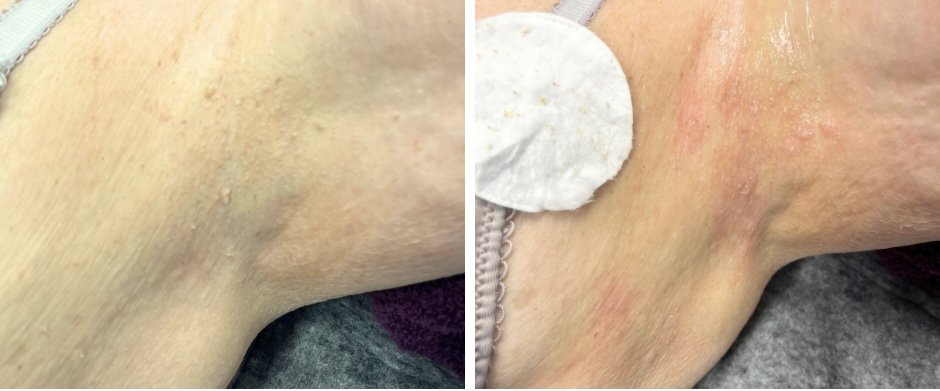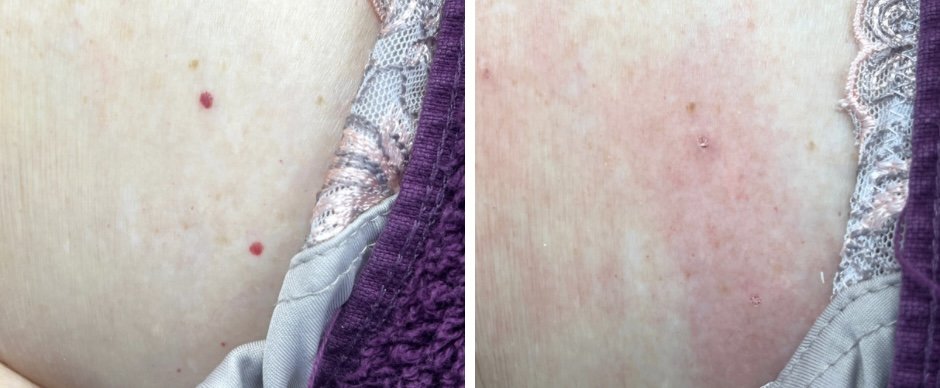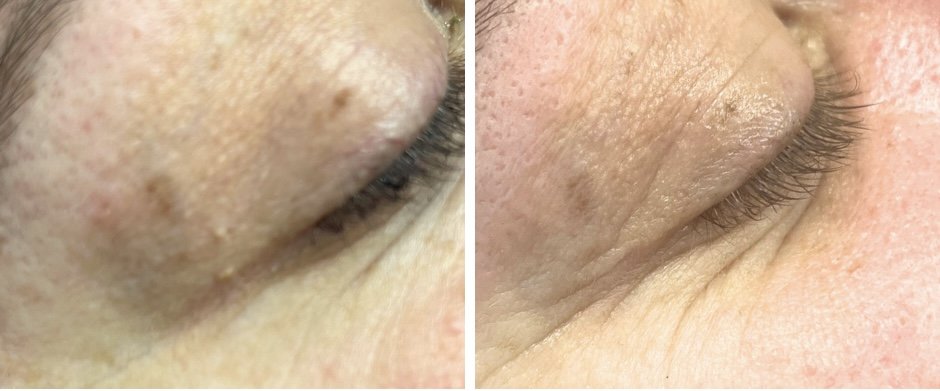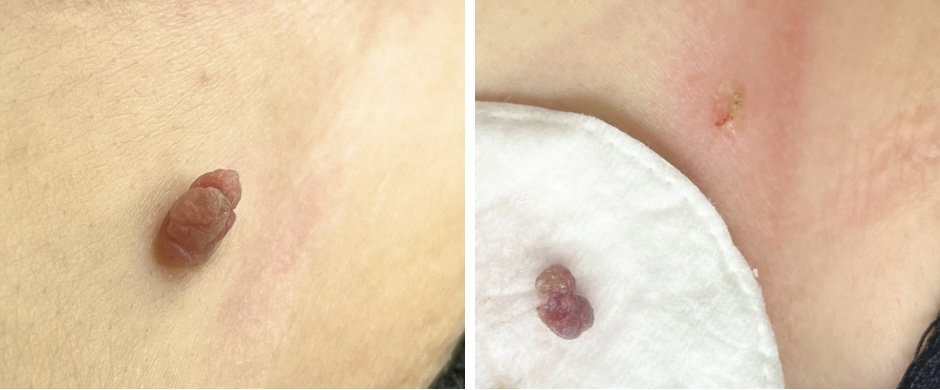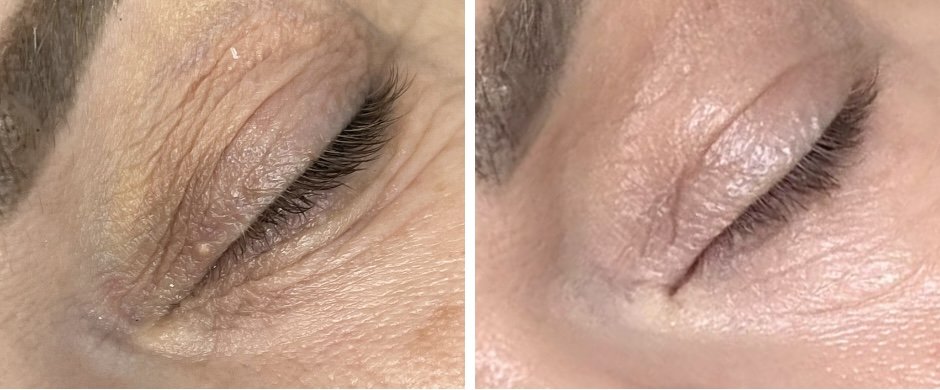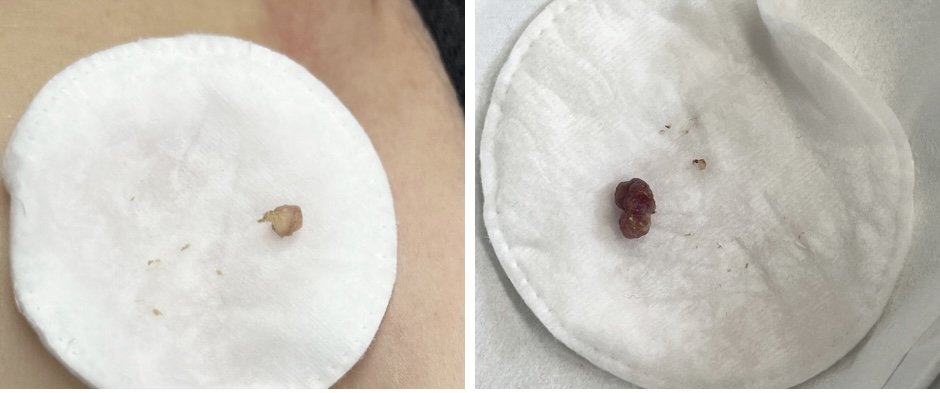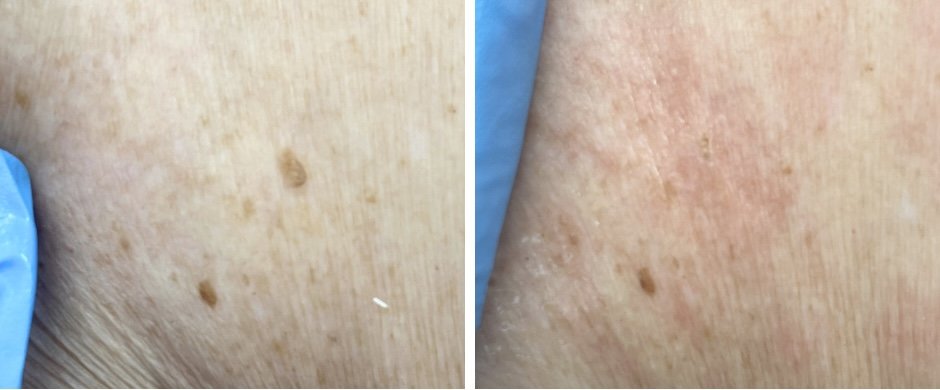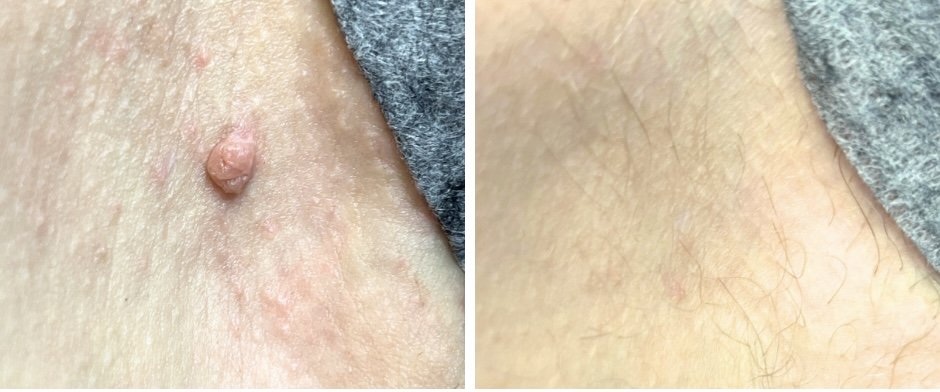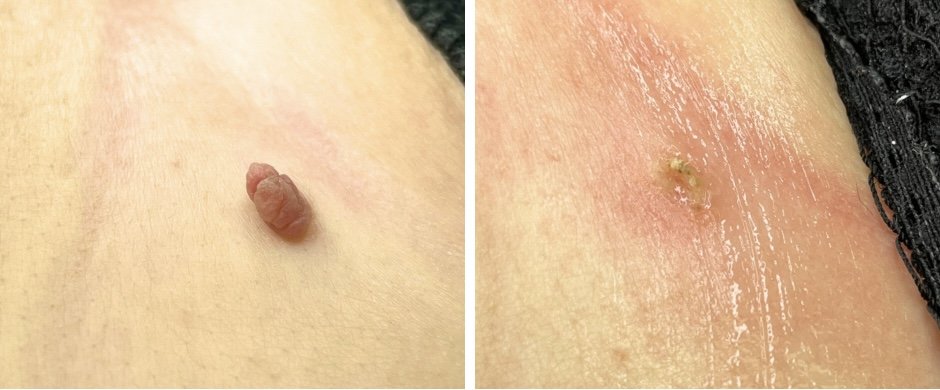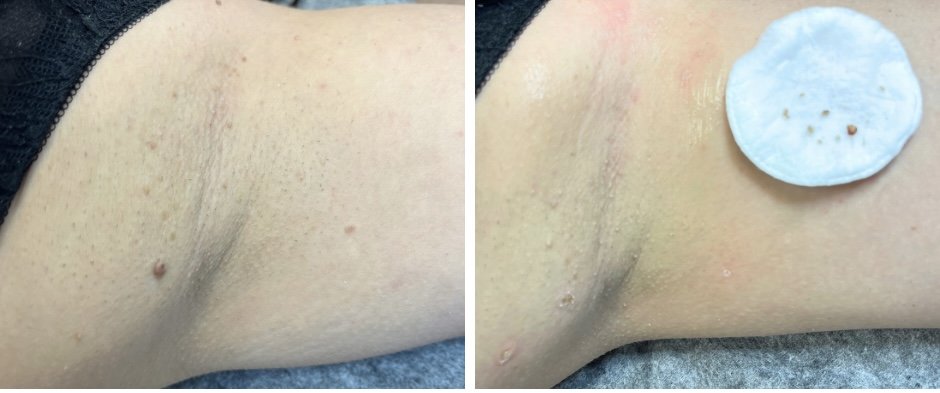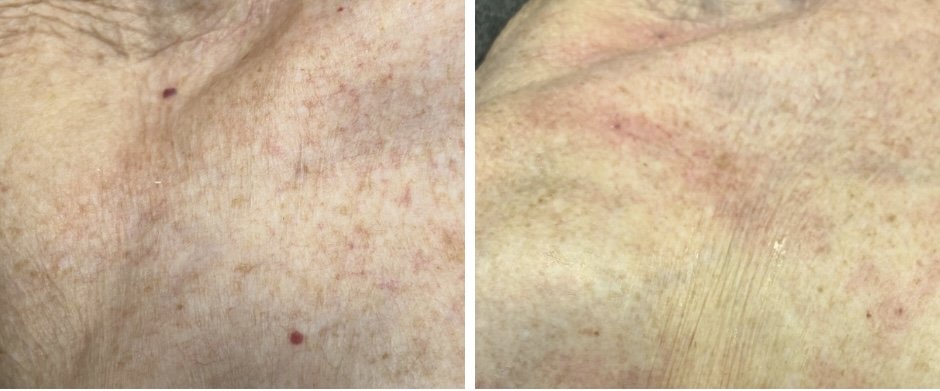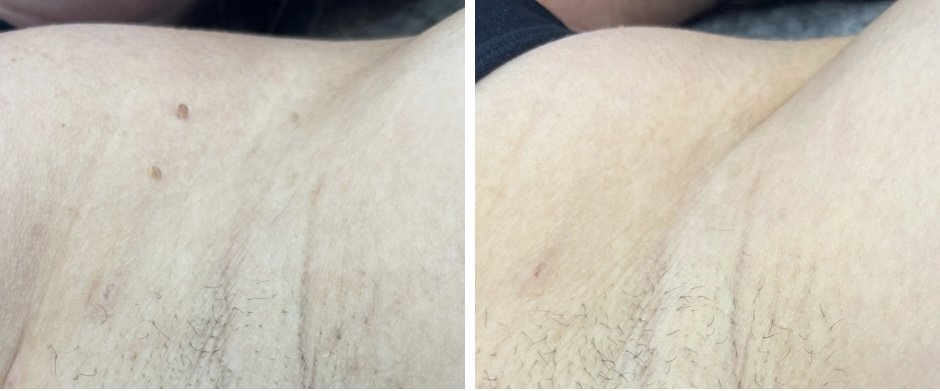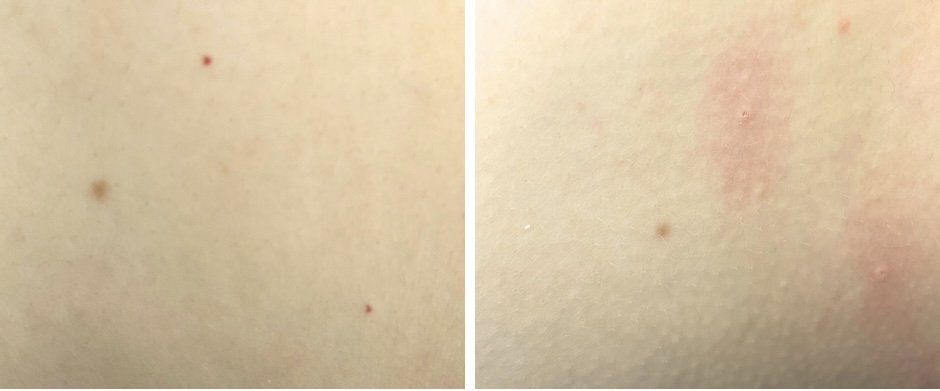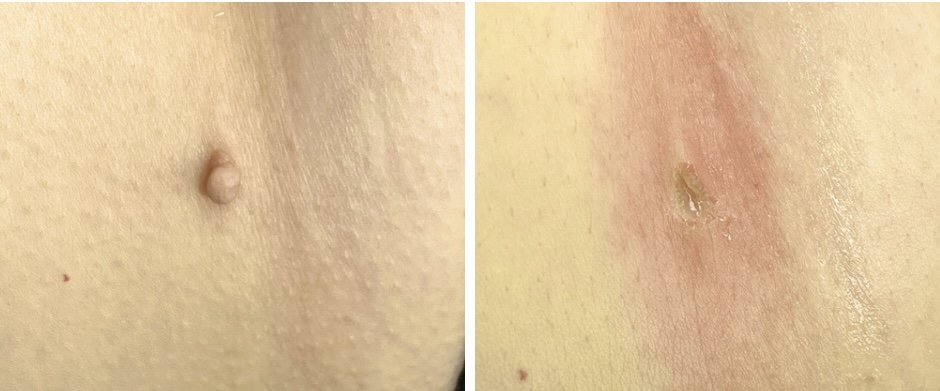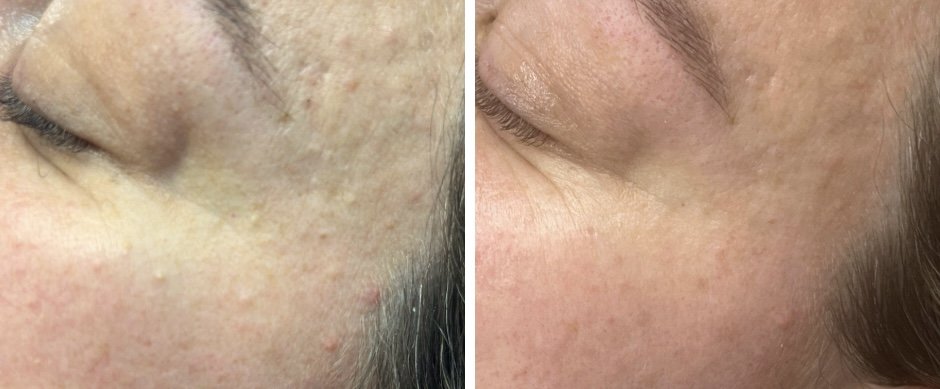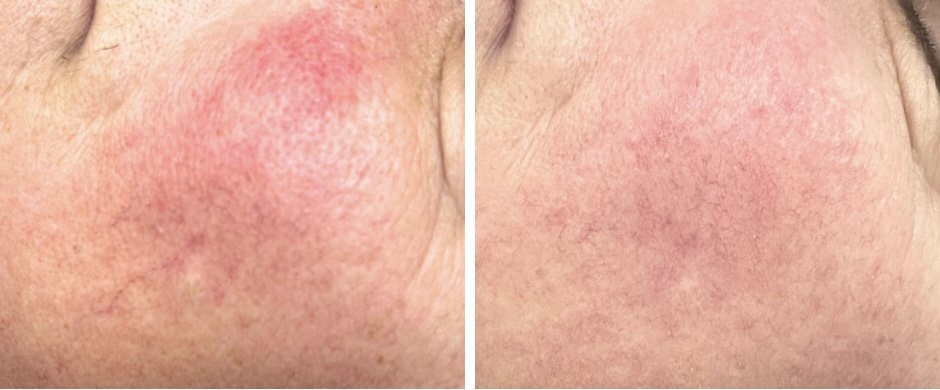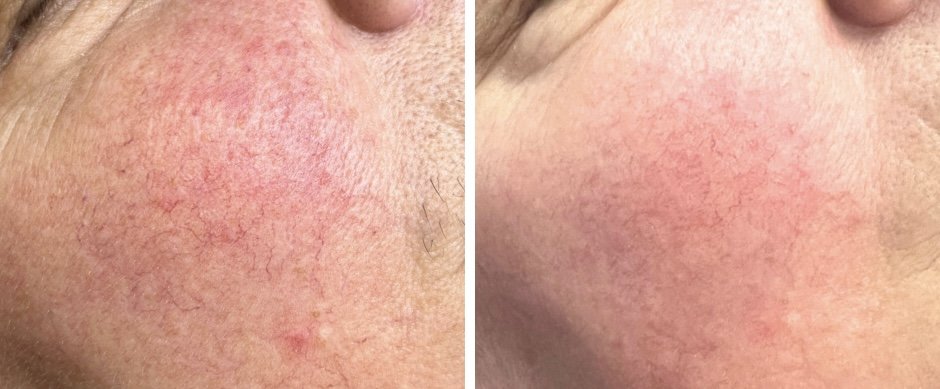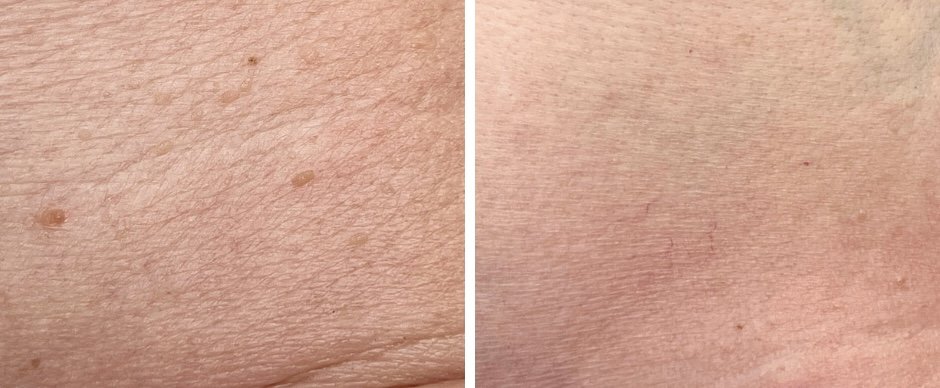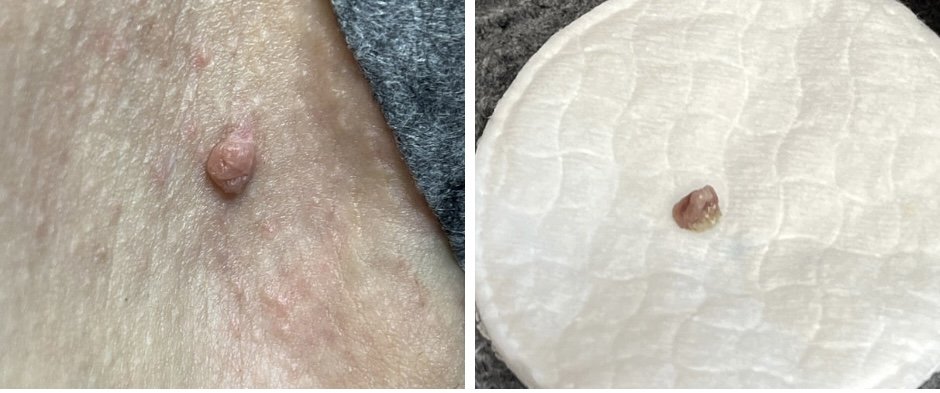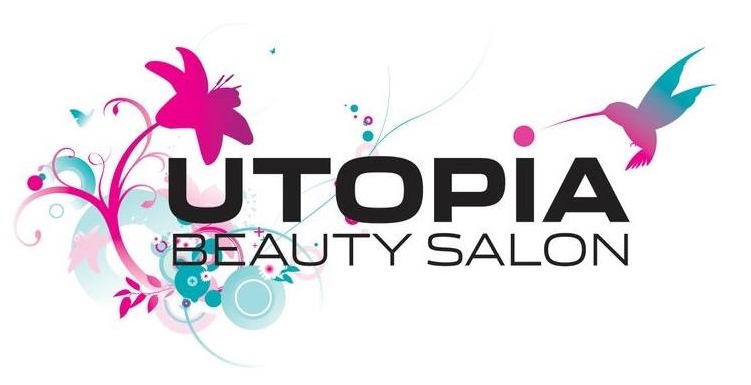advanced cosmetic procedures
Available in Boars Hill only
Advanced electrolysis utilises short wave diathermy to effectively target and remove skin blemishes, offering precise and lasting results. While a little uncomfortable, it is easily tolerated and often quick to treat.
Consultation required prior to determine suitability for treatment and devise a treatment plan.
Consultation £25.00 (redeemable against bookings for Advanced Cosmetic Procedures)
Services include the removal of:
Skin Tags -
A skin tag is a small, benign growth that typically appears on areas of the body where skin rubs against skin or clothing. They are usually flesh-coloured or slightly darker and can vary in size.£95 1-2 small skin tags £165 3-30 small skin tags £165 1-3 large skin tags
Blood Spots -
A blood spot, also known as a cherry angioma, is a small, raised red lesion on the skin caused by an overgrowth of blood vessels. These benign growths can vary in size and may appear anywhere on the body.
£95 1-2 blood spots £165 3-30 blood spots
Age Spots -
Age spots, also known as liver spots or solar lentigines, are flat, tan, brown, or black spots that appear on areas of the skin frequently exposed to the sun, such as the face, hands, shoulders and arms. They are typically associated with ageing and prolonged sun exposure, and result from an accumulation of melanin in the skin.£95 1-2 age spots £165 3-10 age spots
Broken Capillaries -
Broken capillaries, also known as telangiectasia, are tiny blood vessels that have become dilated and visible near the surface of the skin, appearing as fine, reddish lines or blotches. They commonly occur on the face, particularly around the nose, cheeks, and chin. Broken capillaries are often caused by factors such as ageing, sun damage, genetics, and certain medical conditions.£95 per appointment. Multiple treatments often required.
Spider Naevus -
Spider nevus, also known as spider angioma or spider telangiectasia, is a common vascular lesion characterised by a central red spot surrounded by smaller blood vessels radiating outward, resembling a spider's web or a spider's legs. These lesions typically appear on the face, neck, chest, or arms and may be associated with hormonal changes, liver disease, or sun exposure.£95 per appointment. Multiple treatments often required.
Dermatosis Papulosa Nigra -
Dermatosis Papulosa Nigra (DPN) refers to small, benign, dark brown to black papules that commonly appear on the face, particularly in individuals with darker skin tones. These papules are often found around the eyes, cheeks, and neck.£165 per appointment.
Filiform Warts -
Filiform warts are small, elongated growths that typically appear on the face, neck, eyelids, or lips. They have a narrow, thread-like appearance and are often flesh-coloured or slightly darker. Filiform warts are caused by the human papillomavirus (HPV) and are highly contagious£95
Common Warts (prior GP check required) -
Common warts are rough, raised growths that typically appear on the hands and fingers, though they can develop on other parts of the body. These warts often have a cauliflower-like texture and can vary in size. Caused by the human papillomavirus (HPV), common warts are contagious and can spread through direct contact.£190 per appointment. Follow-up treatments often required. Progress will be reviewed after 3 months.
Verrucas (prior GP check required) -
Verrucas, also known as plantar warts, are rough, grainy growths that develop on the soles of the feet. They are caused by the human papillomavirus (HPV) and are often contracted in damp environments like public swimming pools or communal showers. Verrucas may cause discomfort or pain, especially when walking or standing, due to pressure on the affected area.£190 per appointment. Follow-up treatments often required. Progress will be reviewed after 3 months.
Milia -
Milia are small, white or yellowish bumps that commonly appear on the face, particularly around the eyes, cheeks, and nose. These tiny cysts are caused by trapped keratin (a protein) beneath the surface of the skin. Milia are typically painless and benign, often resembling tiny pearls or grains.
£95 1 Milia £165 multiple Milia
Sebaceous Cysts -
Sebaceous cysts are noncancerous, fluid-filled lumps that develop beneath the skin. They originate from blocked oil glands and can occur anywhere on the body. Sebaceous cysts are typically smooth to the touch and may vary in size.£180
Sebaceous Hyperplasia -
Sebaceous hyperplasia is a common skin condition characterised by enlarged oil glands, typically appearing as small, yellowish or flesh-colored bumps on the face. These bumps may have a central indentation and often occur on the forehead, cheeks, or nose.£95 1 Sebaceous Hyperplasia £165 multiple Sebaceous Hyperplasia
Seborrhoeic Keratosis -
Seborrheic keratosis is a benign skin growth that commonly appears as scaly, waxy, wart-like lesions ranging in color from light tan to black. These growths often have a stuck-on appearance and can vary in size and texture. Seborrheic keratosis typically occurs on areas of the body exposed to the sun, such as the face, chest, back, or scalp£165 1-10 Seborrhoeic Keratosis
Syringoma -
Syringoma is a benign skin condition characterised by small, firm, flesh-colored or yellowish bumps that typically develop around the eyes and cheeks. These bumps are caused by overgrowth of sweat glands and may occur in clusters or individually.£165 per appointment. Multiple treatments may be required.
Xanthoma -
Xanthoma, or Xanthelasma, is a skin condition characterised by yellowish, raised plaques that develop on the eyelids, most commonly near the inner corners. These plaques are composed of fatty deposits called lipids and are often associated with elevated cholesterol levels.
£165 per appointment. Multiple treatments may be required.
Mole reduction (prior GP check required) -
Moles, also known as nevi, are common growths on the skin that can appear as small, dark spots or raised, pigmented bumps. They are typically brown or black in colour but can also be flesh-colored. Moles are caused by clusters of pigmented cells called melanocytes. While we do not remove a mole, we can visibly reduce the appearance, flattening it to the skin and often improving the colour.Please be aware that GP approval is required for the treatment of all moles. Your moles should be assessed by your GP and confirmed to be benign with a letter of consent before undergoing advanced electrolysis for reduction.
£190 per appointment. Follow-up treatments may be required. Progress will be reviewed after 3 months.
